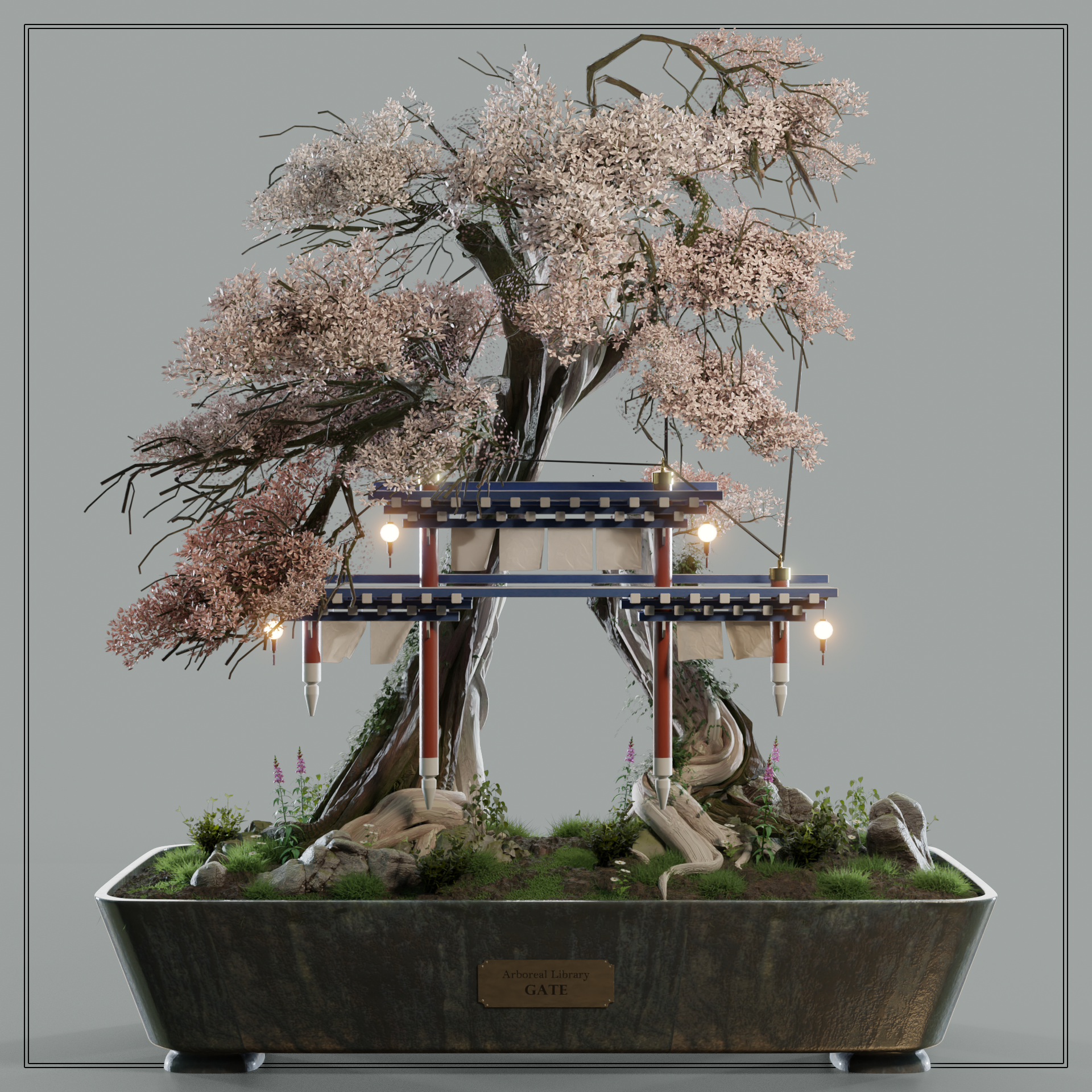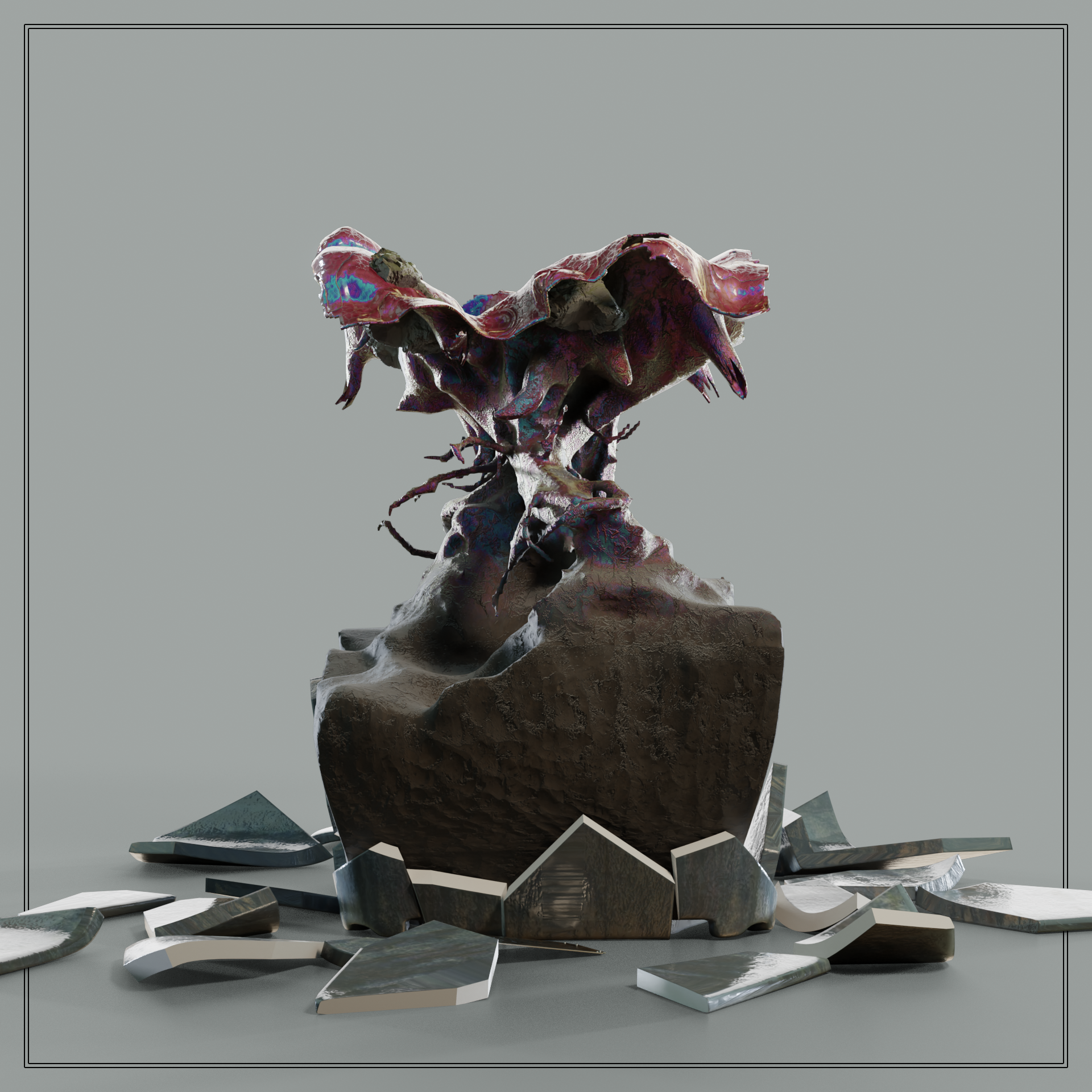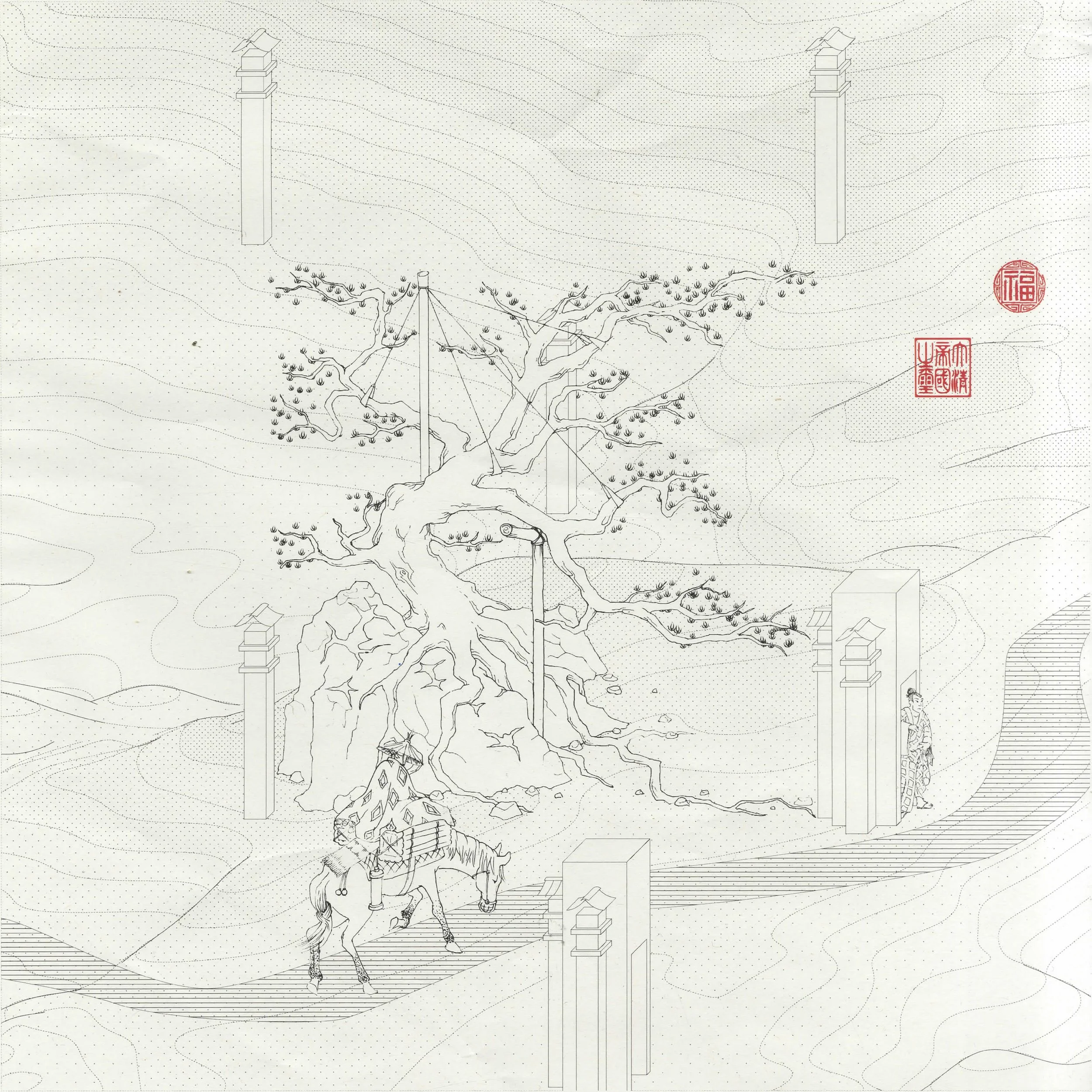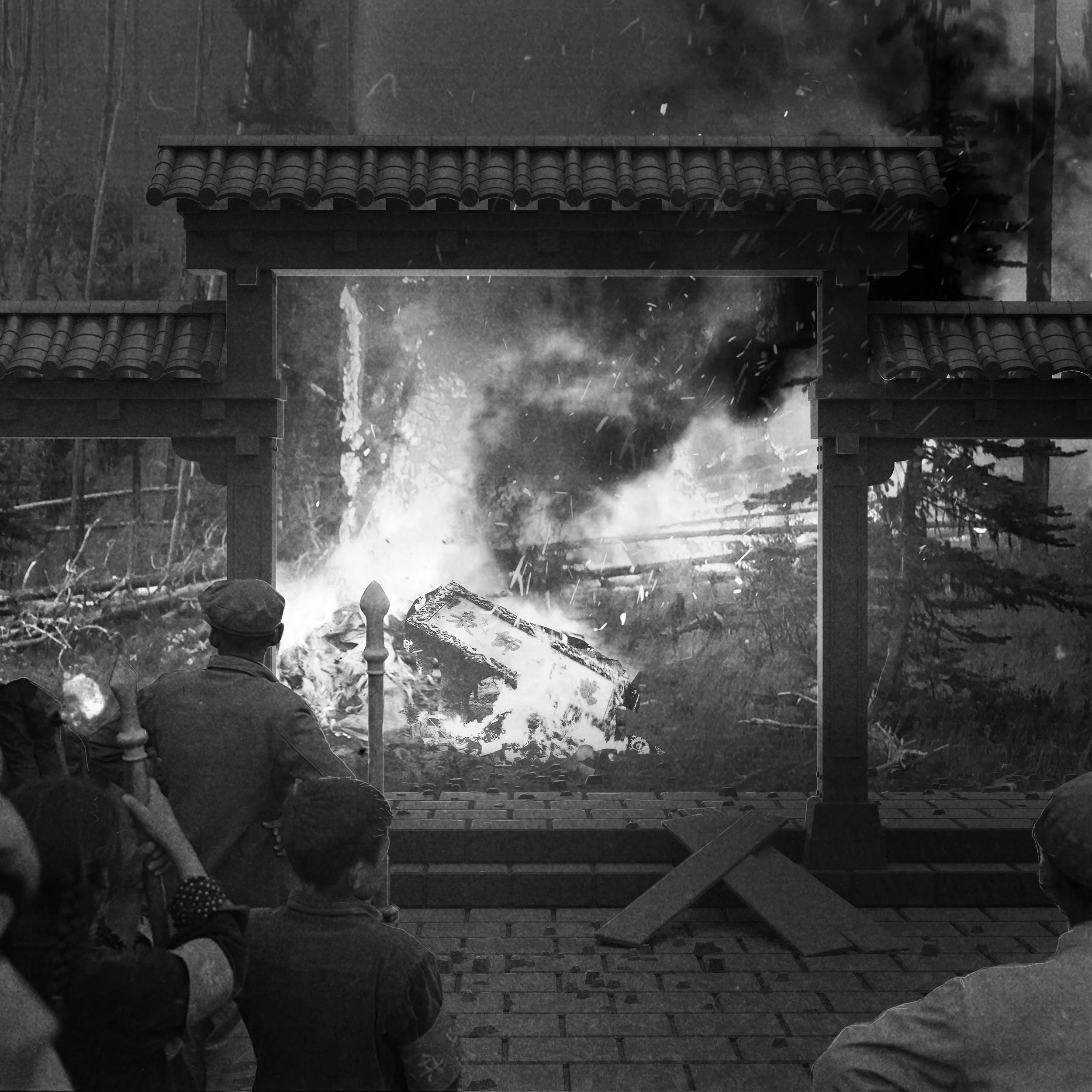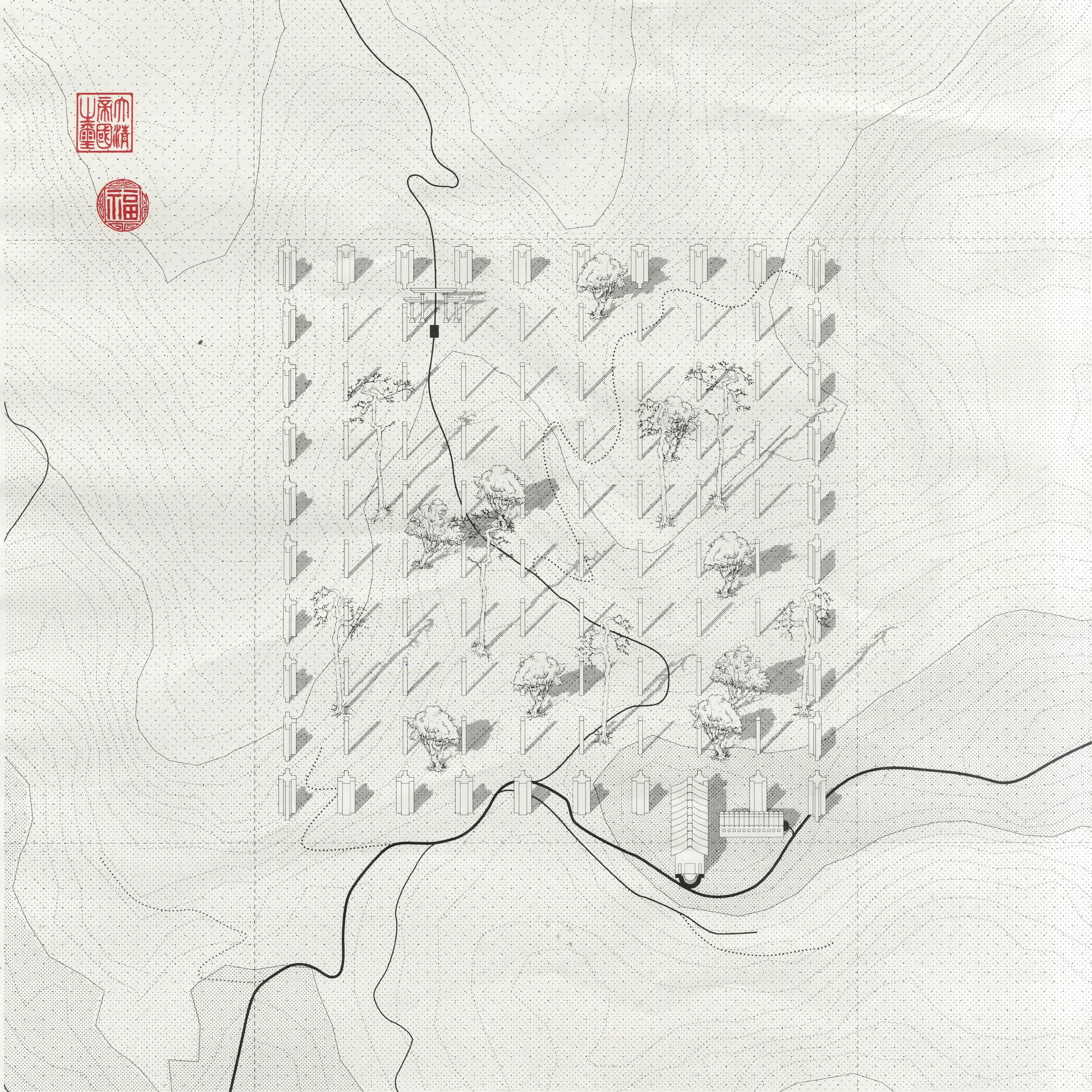THE ARBOREAL LIBRARY
History saved in carefully pruned trees
The project emerged during Ludvig Holmen’s third year at the Architectural Association while he studied under Ricardo deOstos, Nanette Jackowski and Nathan Su. The upcoming short film is narrated by Robert Pogue Harrison who’s writings on gardens, history and culture was the starting point of the project.
"After the founding of the Qin dynasty, Confucian scholars, whose texts were banned under the new regime, founded a garden to keep their stories safe. Developing a language that uses tree sculpting as elaborate Chinese characters, the scholars wrote down the country’s history for the next two millennia. During the cultural revolution in 1967, the garden was attacked and burnt down. The inferno that followed burnt to hot that soil solidified leaving huge hollows where the roots of the trees once grew. Today, the garden is being excavated, exposing the porcelain roots which are examined to rediscover the countries history.
At the time of founding of the first dynasty, the emperor sought to clear society of the Confucian creeds which legitimized the feudal lords in order to form a centralized government. This conflict ultimately escalated into the famous event “The Burning of the Books and Burial of Scholars”.
Confucianism centred on tradition and ancestral worship. Their daily activities were repetitions of customs which existed outside of time. History was flattened into a plane where all events existed simultaneously. Thus for the Confucian scholar, there was no separation between the physical universe and its history.
Their books were banned and they sought a sanctuary for their stories. A language was developed using tree sculpting. Like the symbols the scholars had once painted on parchment, the trees where abstractions of known form. By the twisting and contorting of the trunk to the attentive trimming every little twig, a master of the craft could write infinitely intricate histories.
They founded a garden where they could tend to the trees sprouting with stories. For the next two millennia, the garden multiplied. All of history was transcribed into the trees.
Later dynasties favoured Confucianism. The scholars received handsome gifts from the aristocracy which had regained its strength. Power was once again dispersed and inequality gave rise to discontent amongst the lower classes.
In 1967, a mob wielding fiery torches attacked the garden. Believing history to be written by the elite and thus only serving the elite, they wished to destroy it. Standing on the intersection of two eternities, for them only the present mattered.
For over half a century after its burning, the garden was buried in a thick layer of ash. Its existence waned from public memory while society adopted a forward looking world view towards progress and riches.
The inferno that had incinerated every tree burned so warm that the soil had solidified. Nothing remained. The roots of the trees left huge hollows with polished porcelain walls. They are the only remnants of the arboreal library.
Today, the garden is being restored. The hollows are being analysed in order to read the form of the trees they once nurtured. The restored hollows reveal the form of the roots. The history is slowly being pieced together.
The fractured fragments have become worn from the weathering. They do not fit together as they once did and a filler is used to join them. In this way, the history is being constructed. Gilded seams trace the lines between fragments of history.
We move backwards into the future. Past traumas determine future aspirations. Patterns of the past are our only guide as we stumble over unseen roots.
